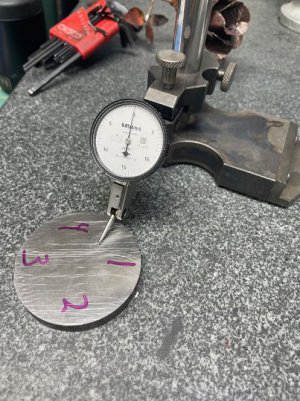- Joined
- Mar 26, 2018
- Messages
- 8,691
Wachuko,Dusting the chuck may solve your problem. However, before I dd it I would be sure the chuck is properly secured to the table. It doesn't need to be torqued down hard, rather just enough tension to hold the chuck in place. If you tighten it down too tight it's likely it will warp over time. In most places it wouldn't be distinguishable, but when you're looking for flatness in the 1/10ths it will make a difference.
When I first got my machine, I noticed the chuck wasn't totally flat. I removed it, cleaned and stoned the table and the underside of the chuck and remounted it. I put a known thickness coupon in each corner and one in the middle and did some grinding. I only took off a couple tenths per pass and only moved over a quarter of an inch or so with each pass. When I was finished it was less than .0001 side to side and end to end.
It's one of those mind-numbing jobs to continue to pass over the coupons until they've totally sparked out. I wouldn't want to do it on a regualr basis, but it was worth the time I spent.
Sorry for infringing on your thread man. But, everything we are talking about is what you will go through to get the basics down.
I was reminded somewhere along this discussion about stoning the chuck.
Another advantage of having a surface grinder is you can make your own precision ground stones.
Bob Korves helped me with my first set and I have since made some for friends and more for myself.
Anyway,
Projectnut, I checked the spindle hub, tightened a hair, stoned the chuck, redressed the wheel then reground both sides of my D2 puck.
I have better results!
First of all, the finish is better.
Then I measured for parallel Perfect.
I think the precision stones made the difference.
Same 1 2 3 4 pattern with the same measurement!
That's incredible to me.
